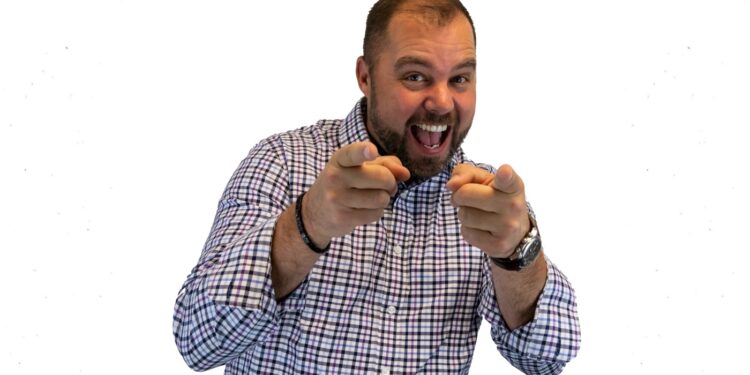Transforming from a traditional accountant or bookkeeper into a financial advisor who can uncover hidden cash for your clients in just 15 minutes may sound like a lofty goal, but it’s precisely what Mike Milan, better known as “Cash Flow Mike,” has made possible. His revolutionary approach empowers financial professionals to boost their confidence, break through stagnation, and elevate their client relationships by unlocking hidden financial potential.
With a focus on providing clarity and confidence, Cash Flow Mike’s program equips you with the tools needed to bridge the gap between standard accounting practices and sophisticated financial advisory services. Whether you’re looking to enhance your advisory skills, build lasting client relationships, or simply unleash hidden cash within your clients’ businesses, this program sets the stage for your transformation.
But how exactly does he do it? Mike’s methods aren’t just about numbers—they’re about uncovering untapped resources and bringing tangible value to every client interaction. His proven system guarantees results; if you don’t unlock hidden cash in 15 minutes, he’ll work with you for free until you do. As we delve deeper into this feature, we’re going to explore the strategies and insights that have made Cash Flow Mike a trusted name in financial advisory services. But first, let’s get to know more about him with a set of questions designed to reveal the man behind the expertise.
- What are some common misconceptions accountants and bookkeepers have about cash flow management, and how does your program correct these?
One of the biggest misconceptions is that cash flow management is just about keeping track of inflows and outflows. While that’s part of it, true cash flow management goes beyond basic accounting—it’s about understanding timing, forecasting, and the impact of every decision on future cash flow. Another misconception is that profitability equals cash flow. Many accountants and bookkeepers assume that if a business is profitable, its cash flow must be healthy, which isn’t always the case. My program corrects these misconceptions by teaching financial professionals to analyze cash flow in a holistic way—considering not just the numbers but the timing, risk factors, and potential for hidden opportunities. The Clear Path to Cash course breaks down complex concepts into actionable strategies that can be applied in real-world scenarios.
2. How do you approach teaching the balance between short-term cash flow fixes and long-term financial health for businesses?
Balancing short-term fixes with long-term health is a critical aspect of cash flow management. My approach is to first address any immediate cash flow issues—like optimizing receivables or renegotiating terms with suppliers—so the business can stabilize. But I always emphasize that these are just the first steps. The long-term health of a business depends on strategic planning, consistent monitoring, and making informed decisions that align with broader business goals. In the Clear Path to Cash course, we focus on building a strong foundation through cash flow forecasting, scenario planning, and understanding the cash conversion cycle. This way, businesses are not just putting out fires but are also setting themselves up for sustainable growth.
3. What feedback have you received from clients who have used your program, and how has this influenced your ongoing development of the course and app?
The feedback has been overwhelmingly positive, with many clients expressing that the program has completely transformed their approach to cash flow. They appreciate how practical and accessible the content is, and many have reported significant improvements in their cash flow management after implementing the strategies taught. This feedback has been invaluable in shaping the ongoing development of the course and app. For instance, we’ve added more interactive elements to the app based on requests for hands-on tools that allow users to see the impact of different strategies in real-time. We also continue to refine the course content, incorporating new case studies and examples based on client experiences to keep the material relevant and up-to-date.
4. How do you help financial professionals overcome stagnation in their careers and what role does mindset play in this transformation?
Stagnation often stems from a lack of confidence or a feeling of being overwhelmed by the complexity of financial management. I help financial professionals overcome this by breaking down concepts into manageable pieces and showing them how to apply these concepts in a way that delivers results. Mindset plays a huge role here—it’s about shifting from a reactive to a proactive approach. I encourage professionals to see themselves not just as number crunchers but as strategic advisors who can make a tangible impact on a business’s success. The Elevation Sequence, a concept I developed, is key to this transformation. It helps professionals build the confidence they need to motivate clients and take decisive actions that lead to growth and success.
5. How do you address the skepticism some may have about the promise of uncovering hidden cash in just 15 minutes?
Skepticism is natural, especially when claims seem too good to be true. But the reality is, that most businesses have inefficiencies in their cash flow that can be identified and addressed quickly once you know where to look. The 15-minute conversation is about using a structured approach to analyze financial statements and uncover these inefficiencies, whether it’s in receivables, payables, inventory, or other areas. I’ve seen it work time and again—not because it’s magic, but because it’s a systematic process that focuses on the right areas. The Clear Path to Cash course and app provides the tools to make this process straightforward and repeatable.
6. What are the key elements that you believe are essential for sustaining success as a financial advisor in today’s competitive market?
In today’s market, it’s not enough to just be knowledgeable—you need to be adaptable, proactive, and client-focused. First, staying current with technology and industry trends is essential. Financial advisors who can leverage technology to provide faster, more accurate insights will always have an edge. Second, building strong relationships is crucial—clients need to trust that you’re looking out for their best interests. Finally, having a mindset of continuous learning and improvement will keep you ahead of the curve. The financial landscape is always changing, and those who embrace change and seek out new opportunities will sustain long-term success.













Recent Comments